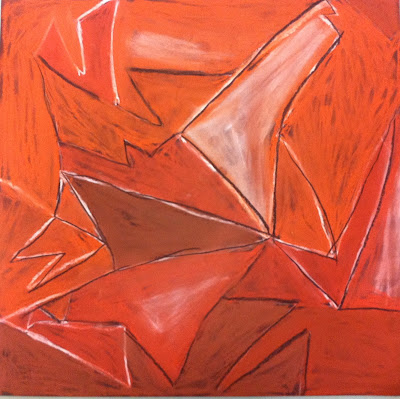Today I had the pleasure of covering a 2nd Grade class that I don't normally get to see, 2-201. As a result, I needed to come up with a lesson that they could start and finish in the span of 45 minutes. The teacher told me that they have been studying "communities", so I decided to have them work in teams to build various "communities" out of modeling clay, a material that lends itself perfectly to a short work-time and an even shorter clean-up.
At the beginning of the class we discussed communities and they shared with me what they have been learning them in their classroom. We then made a list of communities we know (urban, suburban, rural), as well as communities we wish existed (dinosaur land, candy land, Atlantis, a city on Mars, etc.).
After this, I introduced clay and we discussed the ways we can change the clay with our hands (i.e., roll, press, poke, pull, break apart, smoosh together, etc.). Most of these students had me in first grade and/or Kindergarten, so they had worked with clay before. However, I wanted to review the ways we can build and change clay.
 |
| Adonis exploring the malleability of modeling clay |
Children then went to tables and were given a card that had a name of community written on it (from our list). They were then instructed to work together to build this community on a large piece of paper at the center of each table. They would need to start by deciding which elements they would need and who would build each element. Once they had created some elements, students began putting their communities together on the large pieces of construction paper that I had placed at the center of each table. Some pictures of students working together:
At the end of class, we took time to walk around to each table and look at the different communities. Students took turns at guessing which community each team built. We talked about how different parts were made and the way different teams constructed their communities (some teams created more vertical elements while other teams used relief to create parts of their communities).
 |
| "City on Mars" had a very detailed Martian! |
 |
| The "Farm" Community was built in relief |
 |
| "Under-The-Sea City" had a lot of fantastic creatures! Check out that Octopus! |
|
 |
| "The North Pole" is a community of "Elves and Snowmen living amongst candy cane trees"! |
|
|
|
|
Because modeling clay never hardens, students "smooshed" their clay up and put it away to explore with another day. As a side note, I sometimes like to do lessons that don't result in a "take-away" final product because it forces students to not become to precious with their artwork (and to learn to find joy in the process, instead of worrying about a final product). If I cover this class another day, I may do a follow up lesson where they create drawings about the community they created in clay so that they could then bring home a work of art to share with their parents, as that is always important too!














































